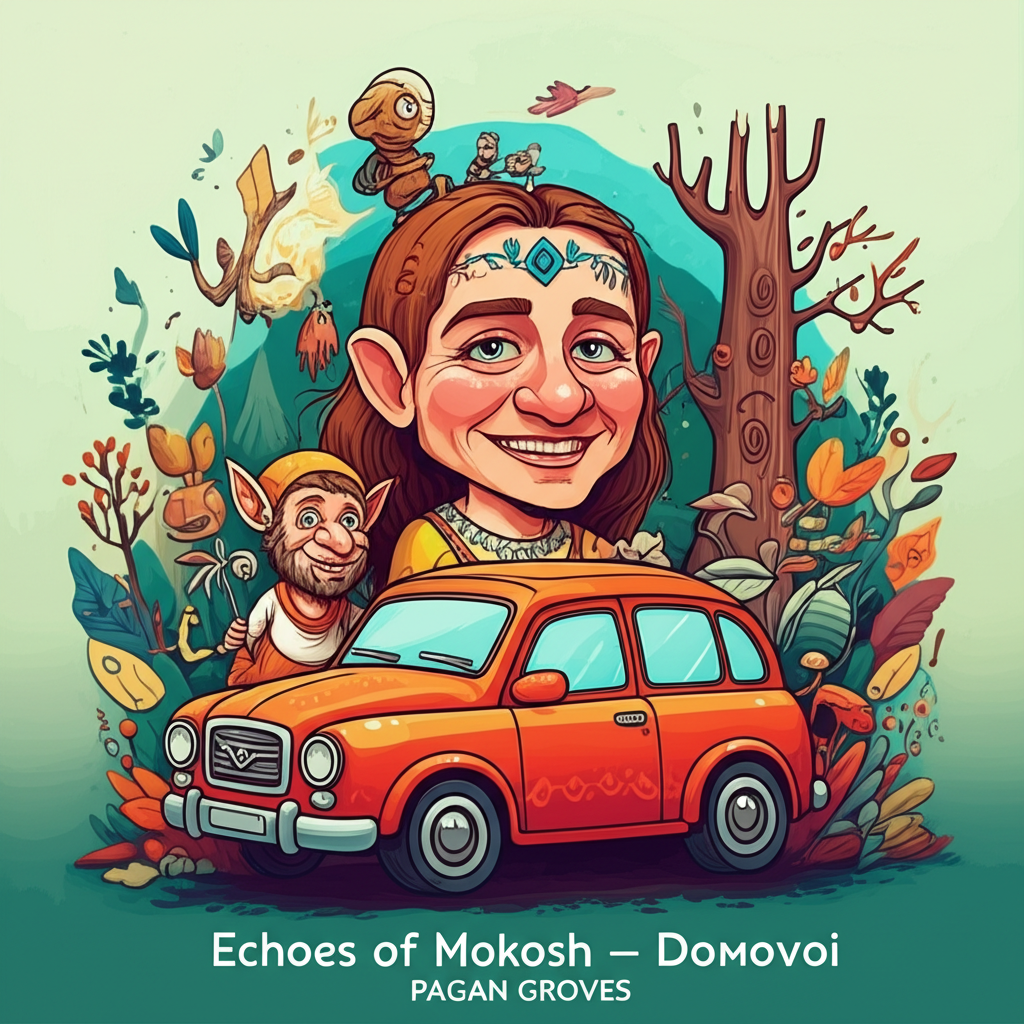
In the tapestry of ancient Slavic folklore, where the veil between the tangible and the unseen was thin, stories of spirits and deities were woven into the fabric of daily life. These narratives, passed down through generations around crackling hearths and beneath the vast, star-dusted skies, offered explanations for the world’s mysteries, guidance for living, and a framework for understanding humanity’s place within a vibrant, animated natural realm. Among these enduring tales are the whispers of Mokosh, the primordial Earth Mother, the protective presence of the Domovoi, and the profound significance of pagan groves. These are not tales of divine power to be worshipped, but rather windows into the imaginations of ancient peoples, their worldview, and their deep connection to the land.
The cultural landscape from which these stories emerged was one of agrarian societies nestled within the vast forests and fertile plains of Eastern Europe. For these ancient Slavs, life was inextricably linked to the cycles of nature. The turning of seasons dictated the rhythm of their lives – the planting and harvesting of crops, the harshness of winter, the burgeoning life of spring. Their understanding of the world was animistic; they believed that spirits inhabited not only animals and plants but also natural features like rivers, mountains, and, crucially, trees. This worldview fostered a profound respect for the environment, viewing it as a living entity, capable of both nurturing and challenging them. In this context, deities and spirits were not distant, abstract concepts but rather active participants in the human experience, their influence felt in the rustling leaves, the flowing water, and the very earth beneath their feet.
Central to this pantheon, or at least to the foundational understanding of the world, was Mokosh. She was the great Earth Mother, the goddess of fertility, destiny, and weaving. Her presence was felt in the abundance of the harvest, the spinning of thread, and the ultimate fate of all living things. While not always explicitly the focus of every tale, her influence permeated the belief system. She was the earth itself, the source from which all life sprang and to which all life returned. Her power was inherent in the land, in the soil that yielded sustenance and the spinning wheel that transformed raw fiber into usable cloth, a metaphor for the weaving of life’s destiny.
From the nurturing embrace of Mokosh, and perhaps as her earthly manifestations or appointed guardians, arose the Domovoi. These were not fearsome demons but rather household spirits, deeply attached to the hearth and home. Often depicted as small, elderly men with long beards, sometimes with shaggy fur, they were said to resemble the head of the household or be covered in soot from the fireplace, a constant presence near the family’s center. The Domovoi were the unseen custodians of domestic harmony. Their presence was a sign of a well-run household, a place where respect was shown to elders, and where the hearth was kept burning. A happy Domovoi would ensure prosperity, protect the home from misfortune, and even assist with chores, often heard as the gentle creak of a floorboard or the soft patter of tiny feet. Conversely, an angered or neglected Domovoi could bring about mischief – lost items, unexplained noises, or even minor accidents, serving as a subtle but potent reminder of the importance of maintaining order and showing gratitude.
Intertwined with the domestic sphere and the broader natural world were the pagan groves. These were not mere clusters of trees but sacred spaces, imbued with spiritual significance. Ancient Slavs believed these groves to be exceptionally powerful, often serving as places of worship and ritual. They were seen as the dwelling places of forest spirits, nymphs, and deities. The trees themselves were revered, their age and majesty testifying to their connection to the ancient forces of nature. Within these groves, ceremonies would be held, offerings made, and decisions of importance pondered. The rustling leaves, the dappled sunlight filtering through the canopy, the scent of damp earth and pine – all contributed to an atmosphere of profound reverence and connection to the divine, as understood by these ancient cultures.
The narrative retellings of these beliefs were rich with imagery and deeply embedded in the rhythm of daily life. Imagine a time when winter’s grip was tightening, and the family huddled around the fire. The crackling flames might be interpreted as the restless energy of the Domovoi, ensuring the warmth and safety of the dwelling. If a thread snagged on the spinning wheel, it might be a gentle nudge from Mokosh, reminding the spinner to be mindful of the intricate threads of fate she was weaving in her own life. And on the edge of the village, the dark, silent mass of the pagan grove stood as a reminder of the larger forces at play, a place where the wisdom of the earth and its spirits could be sought, albeit through rituals and observances, not through direct communication as we might understand it. These were not stories of commands or miracles, but of subtle influences, of living in harmony with unseen forces, and of the natural consequences of one’s actions.
The symbolism within these tales is multifaceted. Mokosh, as the Earth Mother, represented the fundamental cycles of life, death, and rebirth, the inexhaustible power of creation, and the inevitable passage of time. She embodied the earth’s bounty and the unseen hand that guided destiny. The Domovoi symbolized the importance of home, family, and the unseen forces that maintained order and well-being within a community. Their presence underscored the idea that even the smallest, most humble elements of life held significance and deserved respect. The pagan groves, on the other hand, represented the wild, untamed power of nature, the connection between the human world and the spiritual realm, and the collective consciousness of a people seeking solace and understanding from the natural world. They spoke of a time when the boundaries between the mundane and the sacred were fluid, and when the natural world was seen as a source of wisdom and spiritual guidance.
In the modern world, these ancient echoes continue to resonate, albeit in transformed ways. The concept of the Domovoi, for instance, has found its way into popular culture, appearing in children’s books and fantasy novels as a benevolent, if sometimes mischievous, household spirit. Mokosh, as a symbol of the earth and feminine divinity, is often referenced in feminist spirituality and neo-pagan traditions, reinterpreted as a powerful archetype of the nurturing earth and the cycles of life. The fascination with pagan groves persists in literature and film, often depicted as places of mystery, ancient power, or hidden knowledge, reflecting a modern yearning for connection to nature and a sense of the sacred in the natural world. These myths serve as rich source material for imaginative storytelling, exploring themes of nature, tradition, and the enduring human need for meaning and belonging.
It is important to reiterate that these are traditional stories, born from the rich cultural heritage and imaginative worldview of ancient Slavic peoples. They offer a fascinating glimpse into how our ancestors perceived the world around them and their place within it. As Muslims, we recognize that only Allah (God) is the true Creator and Sustainer of all that exists. Our understanding of reality is grounded in divine revelation and the recognition of His absolute power and sovereignty. These ancient tales, while culturally significant, are understood within this framework, not as literal truths or objects of devotion, but as testaments to the enduring power of human storytelling, the capacity for imagination, and the rich tapestry of cultural heritage that continues to shape our understanding of the past. The echoes of Mokosh, the whispers of the Domovoi, and the silent majesty of the pagan groves serve as reminders of the stories that connect us to our ancestors, fostering a deeper appreciation for the cultural narratives that have shaped human thought and creativity across the ages.





